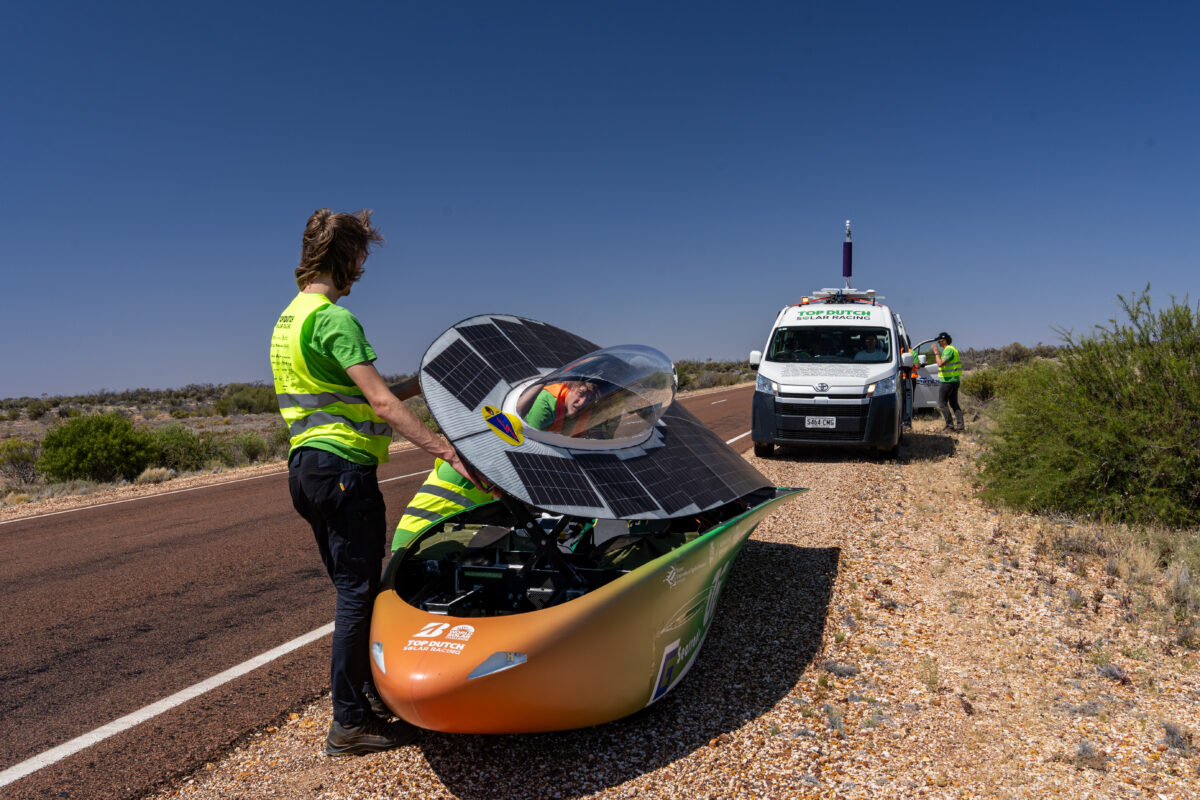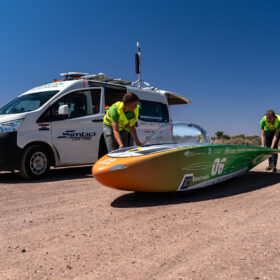Oxford PV, a UK developer of perovskite solar technologies, annouced its partnership with Top Dutch Solar Racing for the upcomig Bridgestone World Solar Challenge in Australia.
The Dutch team is driving a so-called Challenger Class vehicle, which limits solar PV plate to 4 m2 size, according to the race’s regulations limits. “There are about 400 tandem cells in the entire solar deck array,” Stewart Hooper, manager of Product Realisation and Advanced Products, Oxford PV, told pv magazine.
“The tandem cells are a custom size, cut from our regular M6 size production cells,” said Hopper, adding that the standard Oxford PV cells were cut down to 100 cm2 for the vehicle's solar plate. In addition, to keep the weight in check the solar deck array is not enclosed in glass.
This is the first time that Oxford PV is participating in the competition. It has been making efficiency progress in recent months with heterojunction-perovskite tandem cells made at its production facility in Brandenburg, Germany.
“Over the past year our team has been studying how to capture the sun's energy as best as possible using new, innovative technologies that will allow us to compete against teams with over 10 years of experience. Tandem silicon solar cells from Oxford PV can outperform traditional silicon solar cells by at least 20% and represent the next big leap forward for solar power, as silicon cells approach their theoretical limits,” said Laura de la Fuente Esteban, PV Engineer at Top Dutch Solar Racing.
The Bridgeston World Solar Challenge will be on 20-27 October 2023. There are 32 entries in the Challenger Class from 18 locations around the world. Competitors participate from schools and universities around the world. In the The competition was last held in 2019. The 2021 event was cancelled due to the travel restrictions during the Covid-19 pandemic.
This content is protected by copyright and may not be reused. If you want to cooperate with us and would like to reuse some of our content, please contact: editors@pv-magazine.com.






OK, I’ve heard about these solar cells for a few years now. But I can’t seem to find any to buy. Where are they? I keep seeing stories about how they have made them better, but there are none to be had. When will we see these solar cells available to buy?